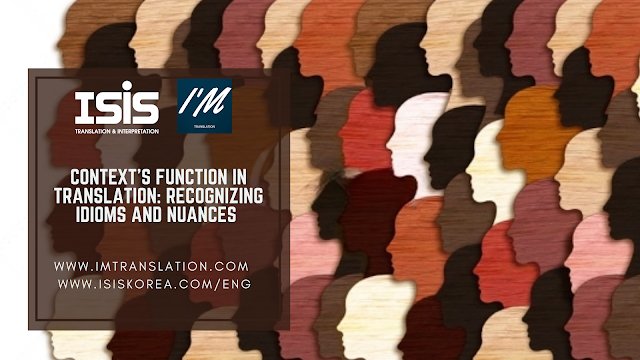Context's Function in Translation: Recognizing Idioms and Nuances
Context's Function in Translation: Recognizing Idioms and Nuances
Translation is more than just word-for-word word conversion; it's also about meaning-transmission that speaks to the target audience's linguistic and cultural quirks. The crucial function that context plays in this intricate process is at its core.
Context Shapes
Meaning
Context provides the
framework within which words and phrases gain their intended significance. It
includes both linguistic context (words surrounding a particular phrase or
expression) and situational context (the circumstances in which communication
occurs). Understanding context is crucial because it allows translators to
capture the subtleties and connotations that may not have direct equivalents in
another language.
Lost in
Translation Nuances
Diverse languages possess subtleties that frequently resist literal translation. For example, idioms are statements whose meanings are not clear from the literal meanings of the words. For instance, the English term "kick the bucket" means "to die," yet if this were translated literally into another language, it would probably cause confusion rather than convey the intended meaning.
In order to preserve
the integrity of the original expression, translators must look beyond literal
translations and find culturally relevant counterparts or interpretations. This
necessitates a thorough comprehension of both the languages and the cultural
environments in which they are used.
Cultural Sensitivity
Culture has a big
impact on how people use and understand language. Different cultures may have
different interpretations or standards of appropriateness for particular
gestures or utterances. To guarantee that their translations are both accurate
and sensitive to cultural differences, translators must carefully negotiate
these cultural quirks.
Challenges and
Solutions
Navigating context
in translation presents numerous challenges. Ambiguities, regional variations,
and evolving language trends all contribute to the complexity of the task.
However, there are several strategies translators employ to mitigate these
challenges:
Research and
Consultation: Translators often conduct extensive research into the cultural
and linguistic nuances of both source and target languages. Consulting with
native speakers and subject matter experts can provide invaluable insights.
Adaptation and
Explanation: Sometimes, direct translation is not feasible. Translators may opt
for adaptation, using similar expressions or metaphors that convey the intended
meaning effectively. Alternatively, they may provide footnotes or explanations to
clarify unfamiliar cultural references.
Contextual Analysis:
Translators analyze the broader context in which texts are situated to ensure
that their translations align with the intended message and tone.
Conclusion
In essence,
translation is a delicate balancing act between linguistic accuracy and
cultural relevance. The role of context in this process cannot be overstated;
it serves as the bridge that connects languages and cultures, allowing for
meaningful communication across borders. By understanding and respecting
context, translators uphold the integrity of the original message while making
it accessible and relevant to diverse audiences worldwide.
Need a translation? I’M Translation and ISIS Korea provides professional translation and interpretation services.
If your company or
institution requires expert translation or interpretation services, consider
working with ISIS Korea. We provide a
variety of services adapted to the unique requirements of your industry,
providing clear and accurate communication between languages. Contact us via www.isiskorea.com/eng




Comments
Post a Comment